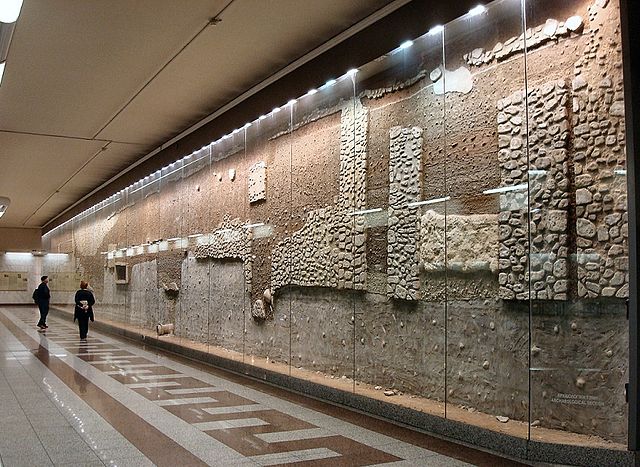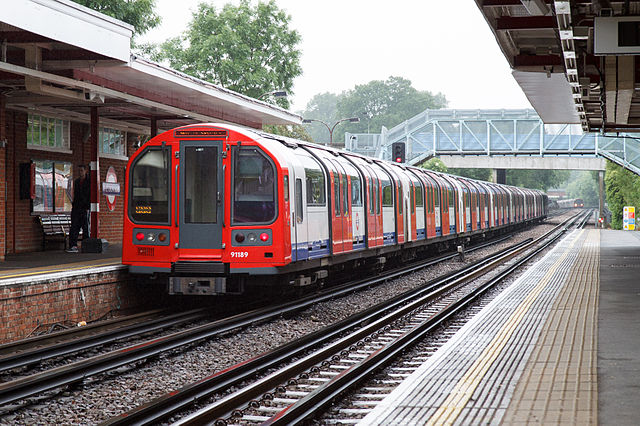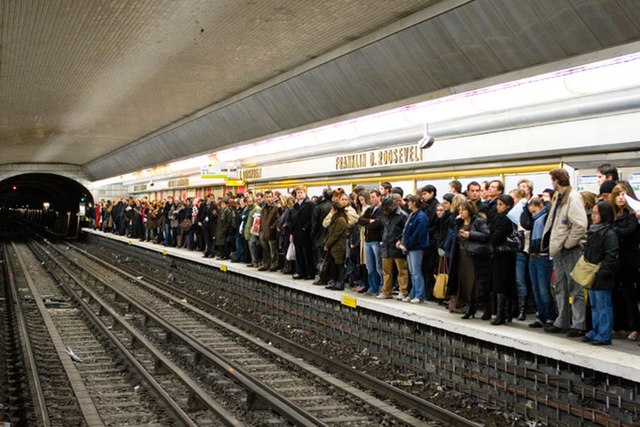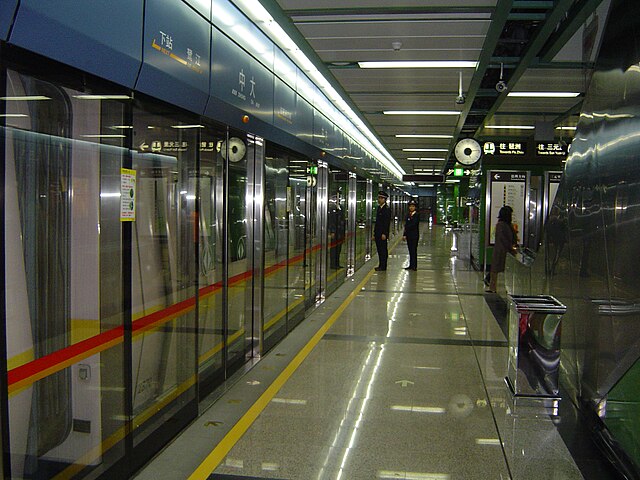A metro station or subway station is a train station for a rapid transit system, which as a whole is usually called a "metro" or "subway". A station provides a means for passengers to purchase tickets, board trains, and evacuate the system in the case of an emergency. In the United Kingdom, they are known as underground stations, most commonly used in reference to the London Underground.
Taipei 101/World Trade Center metro station, Taipei Metro
Every station on Line 14 of the Paris Métro has automatic platform screen doors.
Display of archeological relics found during construction in Athens Metro, part of the Syntagma Metro Station Archaeological Collection
Entrance inside Manhattan's Times Square–42nd Street station, in New York City
Rapid transit or mass rapid transit (MRT), also known as metro, is a type of high-capacity public transport that is generally built in urban areas. A rapid transit system that primarily or traditionally runs below the surface may be called a subway, tube, or underground. Unlike buses or trams, rapid transit systems are railways, usually electric, that operate on an exclusive right-of-way, which cannot be accessed by pedestrians or other vehicles. They are often grade-separated in tunnels or on elevated railways.
The London Underground is the world's first and oldest rapid transit system.
The New York City Subway is the world's largest single-operator rapid transit system by number of metro stations, at 472.
A crowded Paris Métro average station platform in 2007
A station of the Guangzhou Metro in 2005








